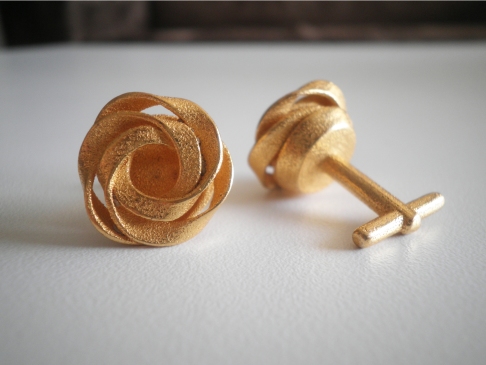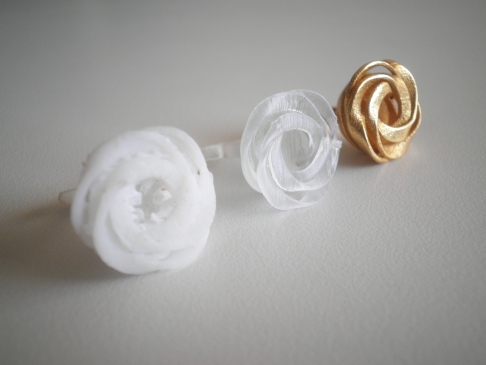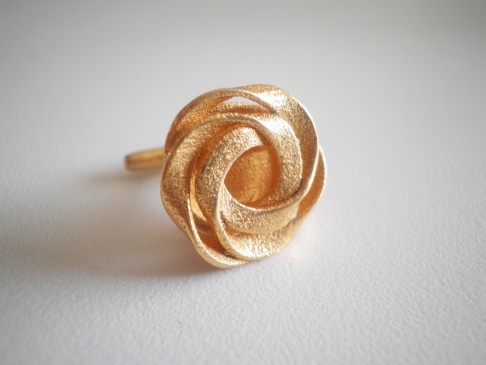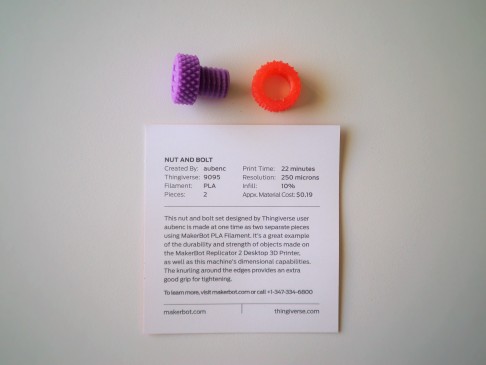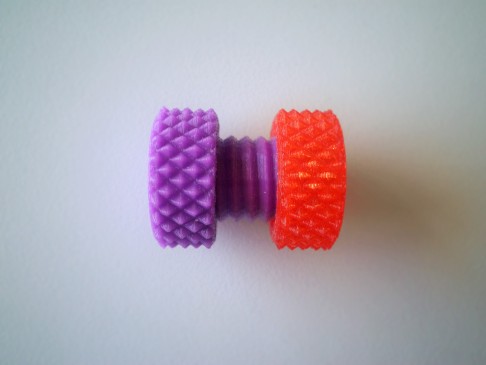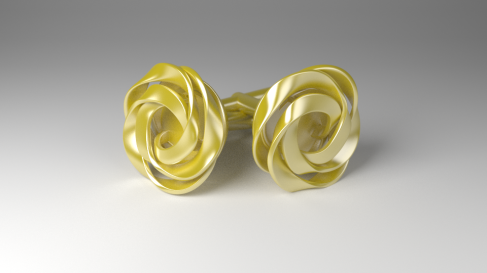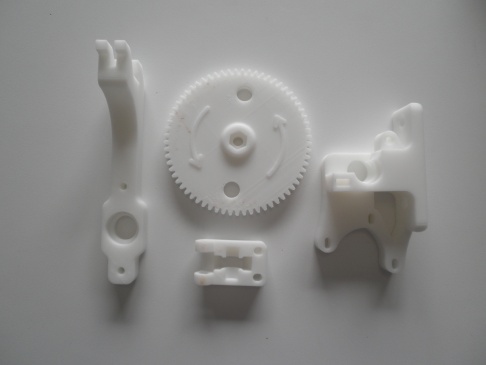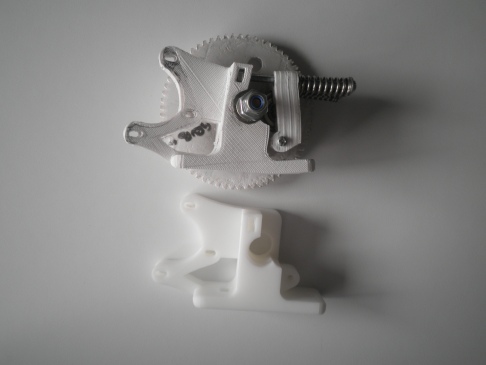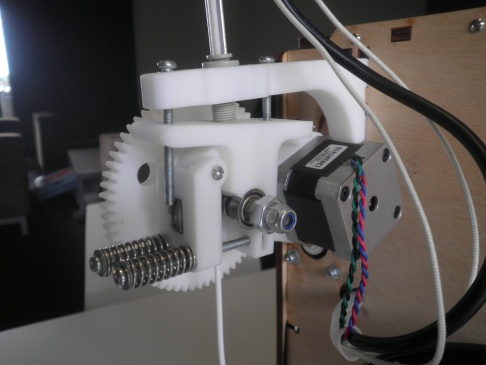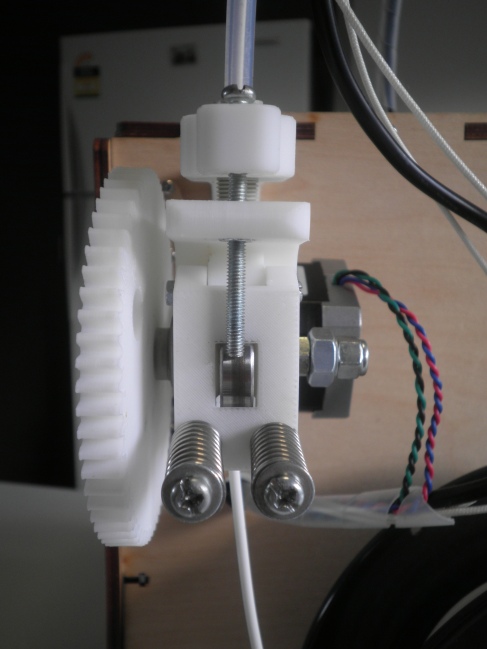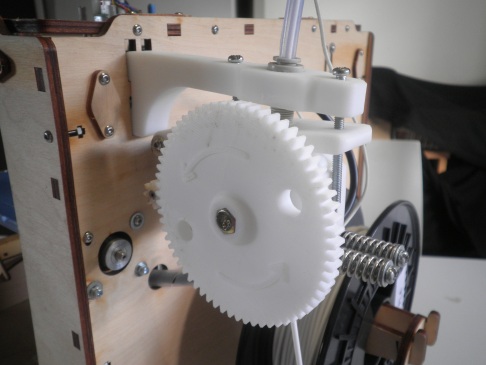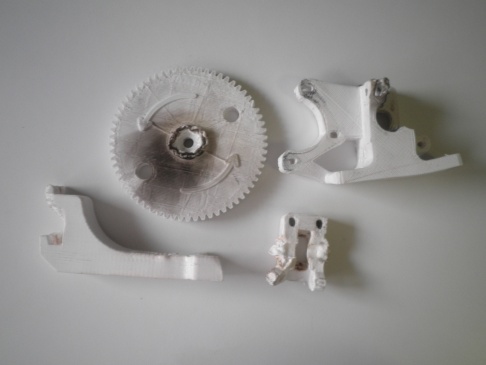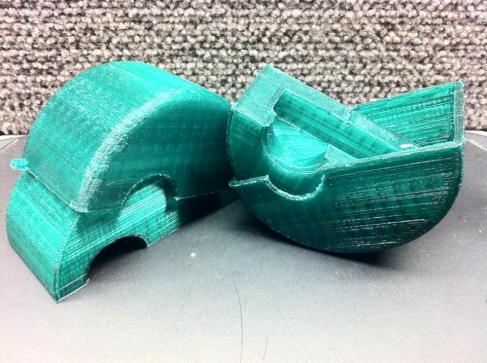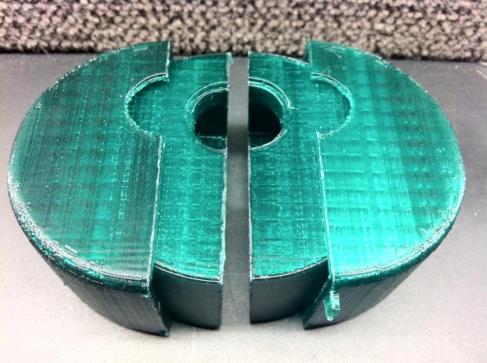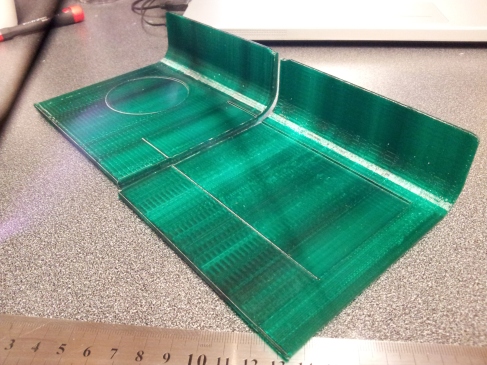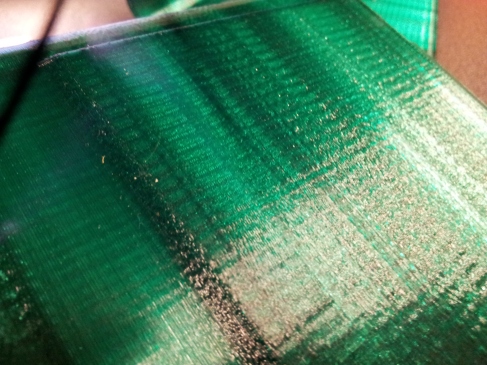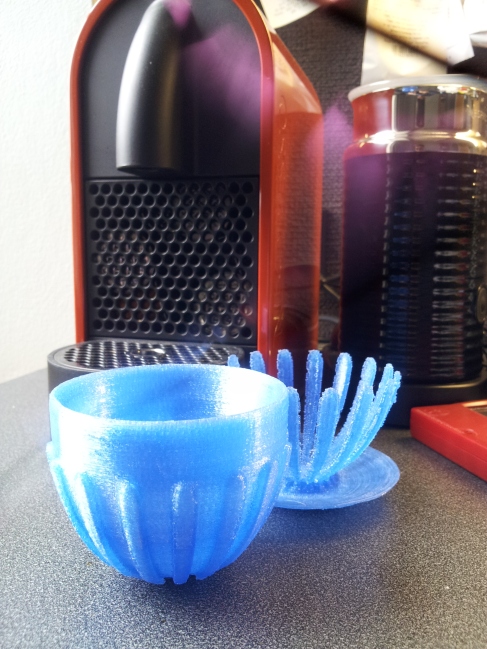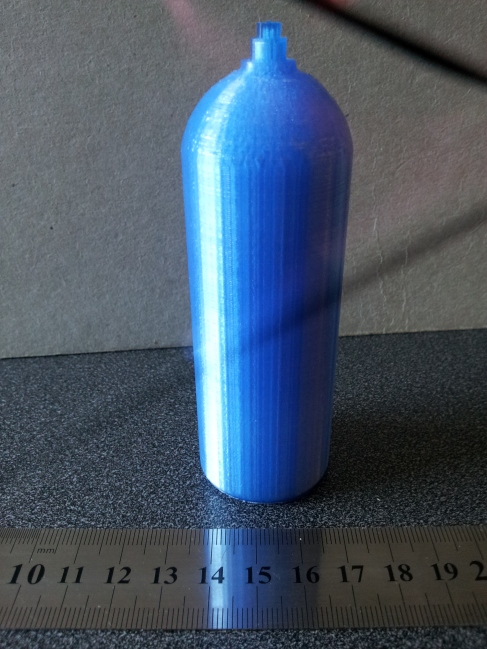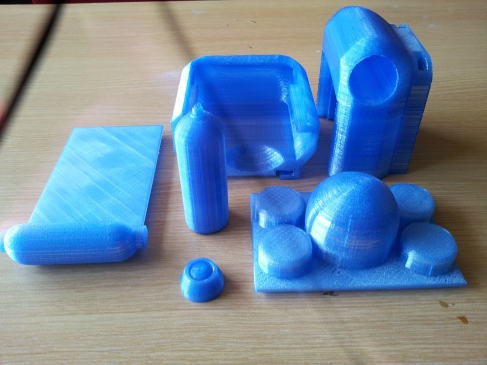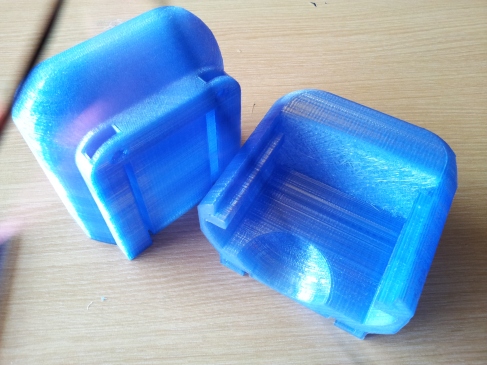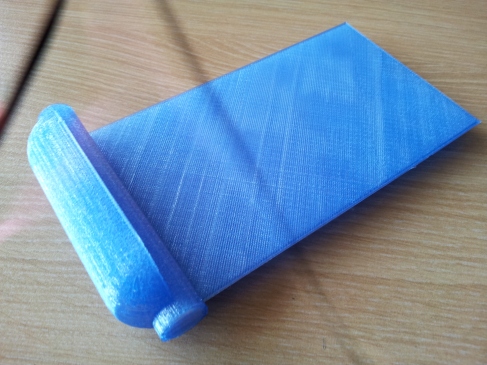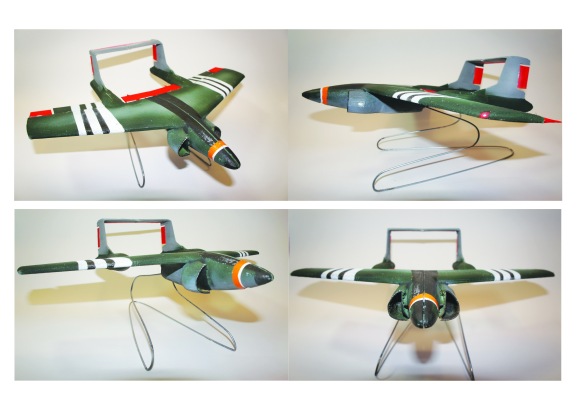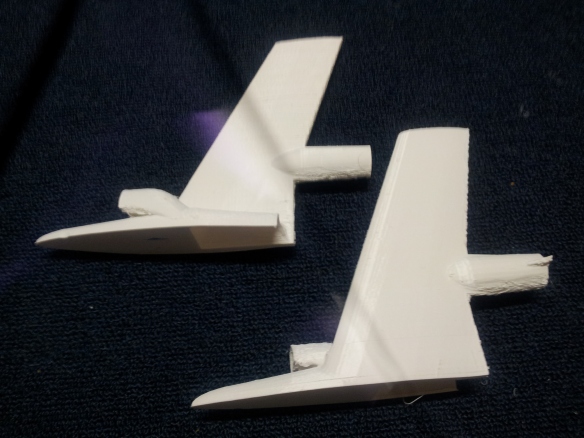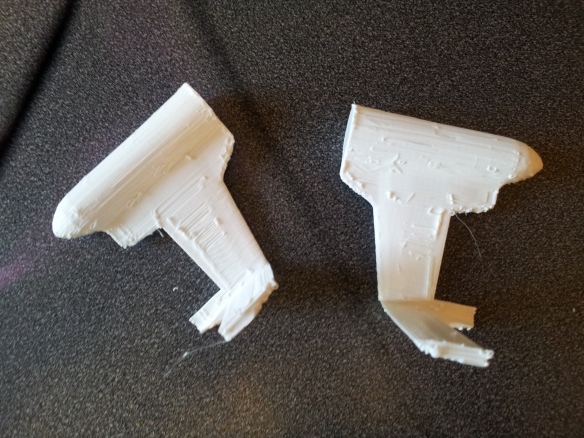After a fews weeks of waiting the final prints from Shapeways have arrived. Using three different printing technology illustrated bellow from left to right: FDM (Up Plus 2), SLA (Form 1) EBM – Electronic Beam Melting (Shapeways) I was able to conceptualise and finalise the design, each process offering different qualities. The FDM process producing excellent quality however needed support structures to form model, resulting in areas being filled in with irremovable supports. SLA process worked extremely well producing quality similar to FDM process with no support structures needed to form the piece, proving to be a better option in printing small intricate works. Finally, EBM – Electronic Beam Melting, whilst Shapeways employ numerous printing technology’s, I’m assuming to create the piece in ‘Polished Gold Steel ‘Enrobed in 24k gold’ this technology would have been employed due to the nature of the technology being able to print without support structures and in various metals; will have to follow up and check. The final piece came out better than expected without any printing problems, Shapeways proving to be an excellent printing service excelling in both quality and service.
Author Archives: brycebeard
Makerbot Sample Kit
Working with Shapeways
Recently i’ve taken up a job to design some cufflinks for a client in which a logo need to be translated into a 3D form and made into a cufflink. The final work/model has been sent off to a printing service called ‘Shapeways’ facilitating a printing service in a range of materials. In this case the cufflinks are to be printed in a Polished Gold Steel ‘Enrobed in 24k gold and polished to a mild sheen with visible print lines’ The job will take will take around 4 weeks to complete, 2 weeks for the job and another 2 for postage. The job will be great illustration of the quality and precision that can achieve with service. Post will be updated with more pictures and evaluation on the finished model when print job has been received.
Refining Ultimakers Extruder Gear System
Due to some warping and accuracy issues of parts, print quality of models began to suffer from poor extrusion. Thus it was needed to revise the extruder gear system and re-print parts on another machine. In this case I use the Up!Plus 2 to print the new parts; 60mm/s, 0.15mm layer height, loose in-fill 50%, ABS. The parts turned out perfectly all components accurate with no post processing needed other than removing support structures and no warping. With help from Katherine Kawecki, we spent a few hours stripping the old system down to reuse the bearings and bolts for the new parts. Documented below is the old system verses the newly printed parts. To note, in order to remove certain parts from the old system it was necessary to melt parts of the housing to free the bearings/bolts, due to adhesives holding components together.
Student Project: Go-Pro Case
by Sunny Raj Singh,
In this project a student needed to test a prototype case design for a Go Pro camera. His assignment was to design a way for the Go Pro camera to be safe when dropped from a high distance, thus printed prototype being used to test impact stress and fit of his design. Print
Print Specifications: Layering: 0.2mm, Temperature: 220 degrees, Infill: 100%, No support structure, Print Speed: 100mm/s
Student Job: Tray System
Water Tightness Test
I wanted to explore the applications of FDM process and whether it was able to create water tight models. Due to the layering and infill process used in FDM i was intrigued to see what quality and infill settings would be needed to make a model water tight. The cup model above was printed with 100% infill and a layering of 0.2mm, it was able to hold water but not for long. Unfortunately the model could only contain the water for around 5 minutes before leaks started to appear.
Print Specifications: Layering: 0.2mm, Temperature: 220 degrees, Infill: 100%, No support structure, Print Speed: 85mm/s
Student Project:
Kevin Peng’s Tray Project,
In conducting the research I was also approached by numerous students regarding print jobs for assignments. This was great experience as it illustrated the capabilities of the technology in fabricating jobs for students, which is great insight in understanding what is required by students and thus appropriate these requirements to the new Faculty based digital printing facility.
Print Specifications: Layering: 0.2mm-0.1mm/s (Depending on part), Temperature: 220 degrees, Infill: 30%, No support structure, Print Speed: 105mm/s
Reproducing Products
Image
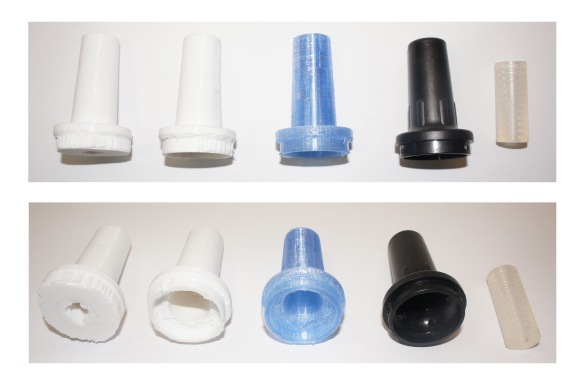
Progress models,
I was able to work with the Cancer Research Facility on campus in reproducing discontinued items/products for the research facility. The job was some what challenging in that the pipe had small necessary details that was required to slot the pipe into the holder. However due to the intricate nature of the sits needed to be replicated and amount of models required, the FDM process wasn’t suited in reproducing the product. Also due to the number of require reproductions of the pipe, it was decided that 3D printing the items wasn’t viable option and other manufacture options should be considered for mass production.
Print Specifications: Layering: 0.1mm, Temperature: 220 degrees, Infill: 70%, Support Structure used, Print Speed: 70mm/s
Student Job: Plane Design Exploration
Image
A student wanted to test the aerodynamics on a thesis design aircraft however was pushed for time and needed the model ASAP. The model was printed in a matte white filament in various parts, glued together then post processed with spray paint for aesthetics. The whole process was fast tracked and completed within 6-8 hours, a little sand was required to smooth out rough edges where overhang occured due to fast printing speed.
Print Specifications: Layering: 0.1mm-0.2mm, Temperature: 220 degrees, Infill: 70%, No support structure, Print Speed: 120mm/s

